
The purpose of this page is to provide an easily accessible Predator Prey Project (P3) resource center for the volunteer angling team, researchers, like-minded organizations, media, and inquisitive anglers . This page is supported by Minnesota Steelheader, volunteer anglers, Lift Bridge Charter Association, area Charter Captains and MN DNR staff at French River.
P3 Purpose:
The Predator Prey Project (P3) was initiated in winter 2020 to support a larger, lake wide analysis of fish diets (Status of Food Web Dynamics of Lake Superior Fishes in 2021; Sitar et al.). The objectives of the lake wide study (Sitar et al.) is to measure the diet compositions of all fishes in Lake Superior to report the current status of the food web.

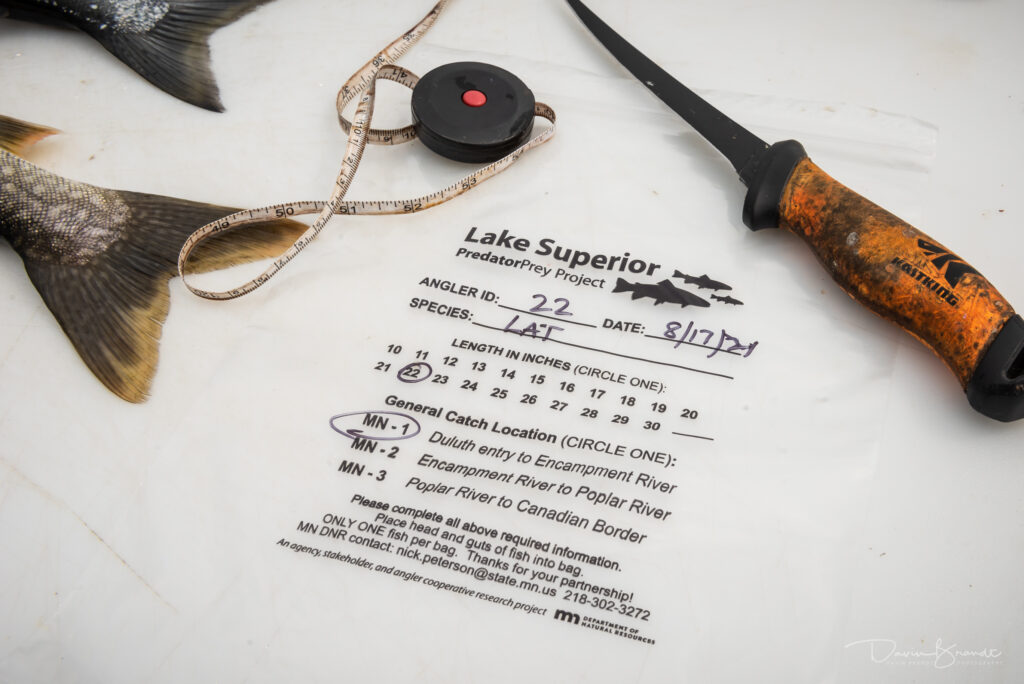
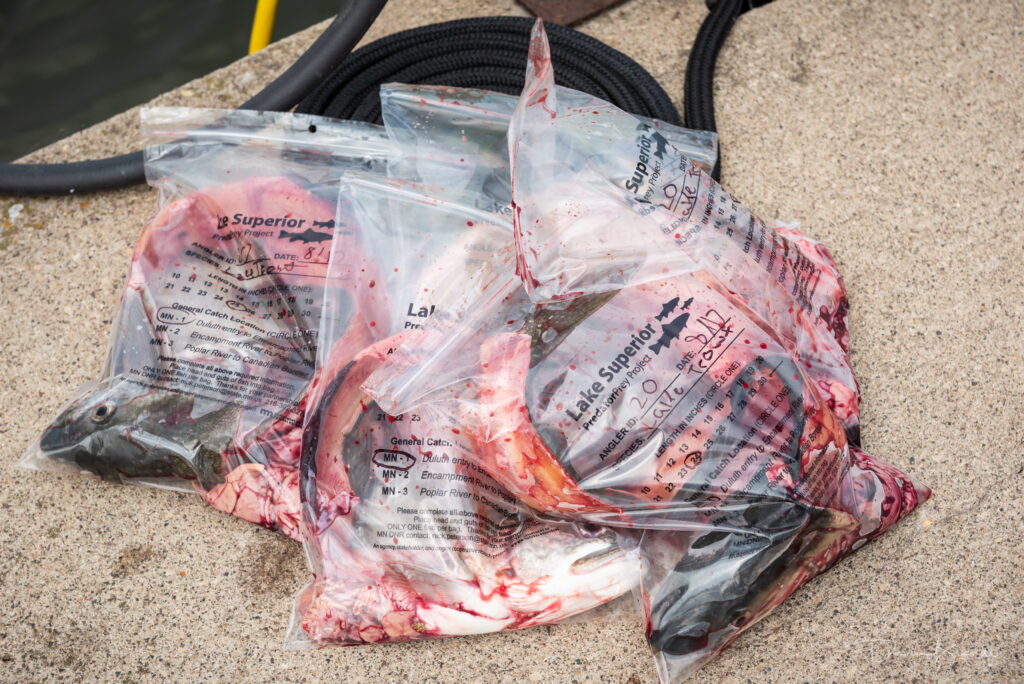
Don Schreiner, Minnesota Sea Grant Fisheries Specialist and retired Lake Superior Fisheries Supervisor for the Minnesota Department of Natural Resources.I appreciate that Minnesota Steelheader has sought to understand the science behind Lake Superior fisheries management and work as a group to protect and enhance the entire fish community now and for future generations
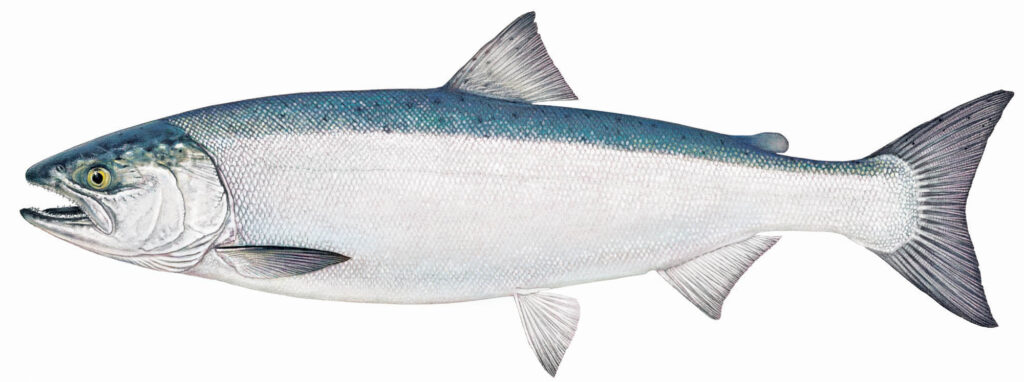
Project Objectives:
1. Measure the diet compositions of predator fishes in Minnesota waters of Lake Superior to report the current status of the food web
2. Determine the degree of spatiotemporal variation in predator diets in Minnesota waters (how to diets vary by species, month, catch location, and year)
3. Describe current forage conditions for predators in Minnesota waters of Lake Superior (compare composition of diets, ration size, and prey size to determine how the prey base is being impacted and impacting predators)
4. Delineate the trophic relationships (niche overlap and trophic position) among the nearshore salmonid complex and other nearshore predators using stable isotope analysis of muscle tissue.
5. Determine the relative inshore vs. offshore contributions to predator diets in Minnesota waters using stable isotope analysis.
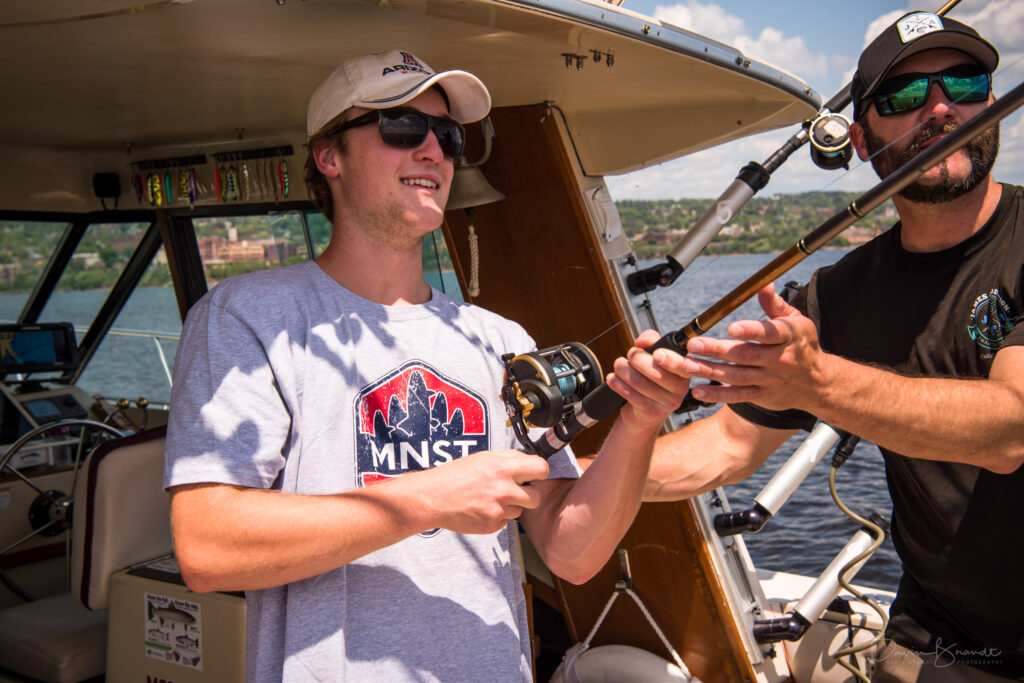
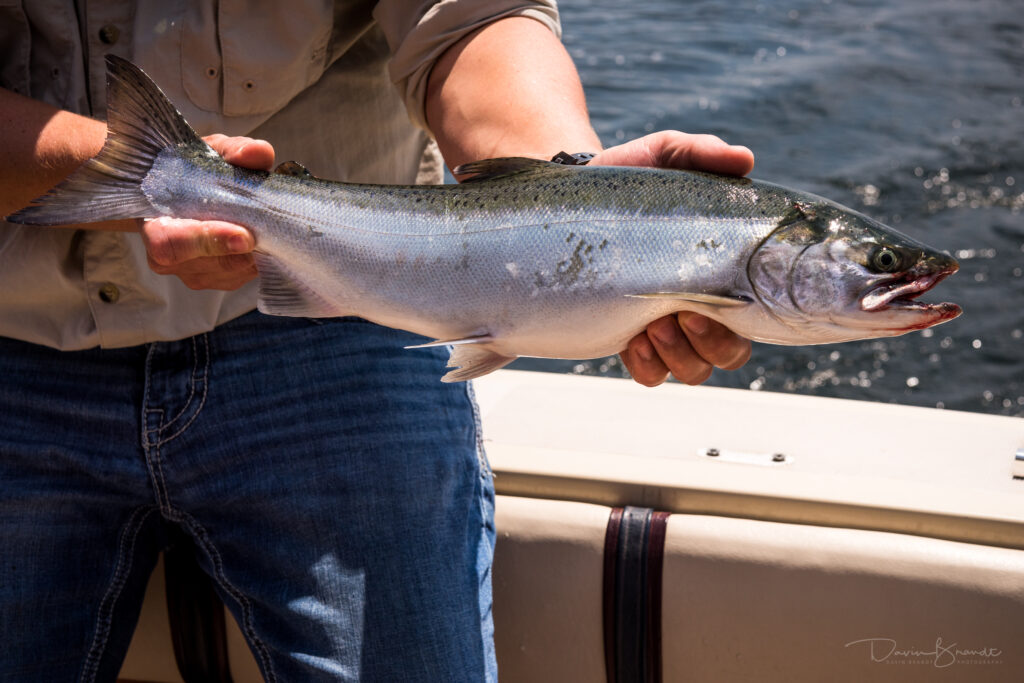
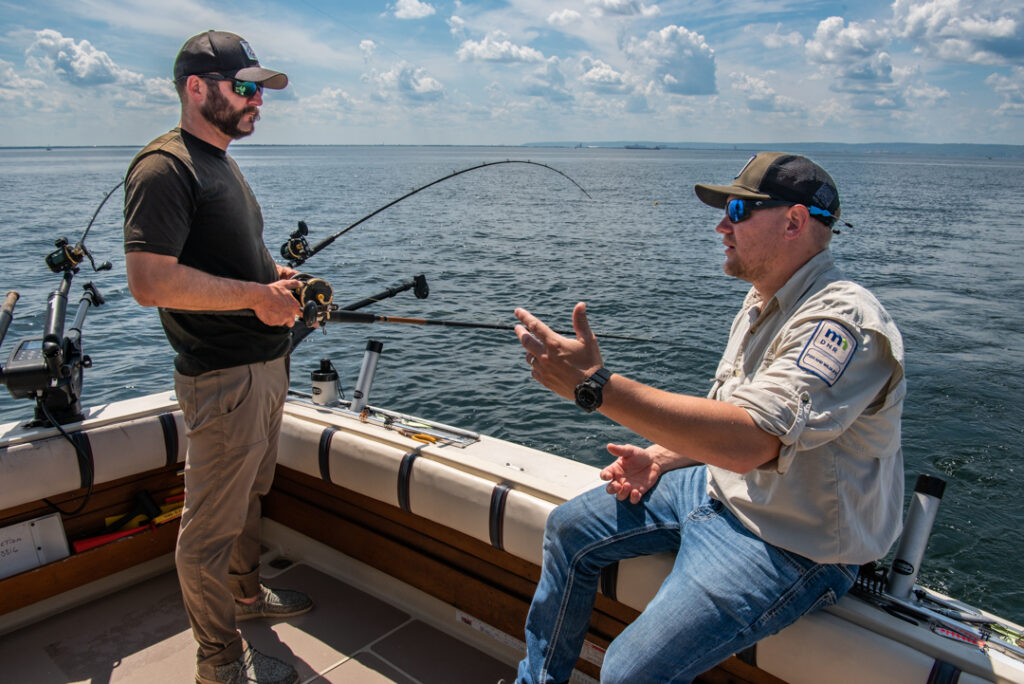
What we are doing today.
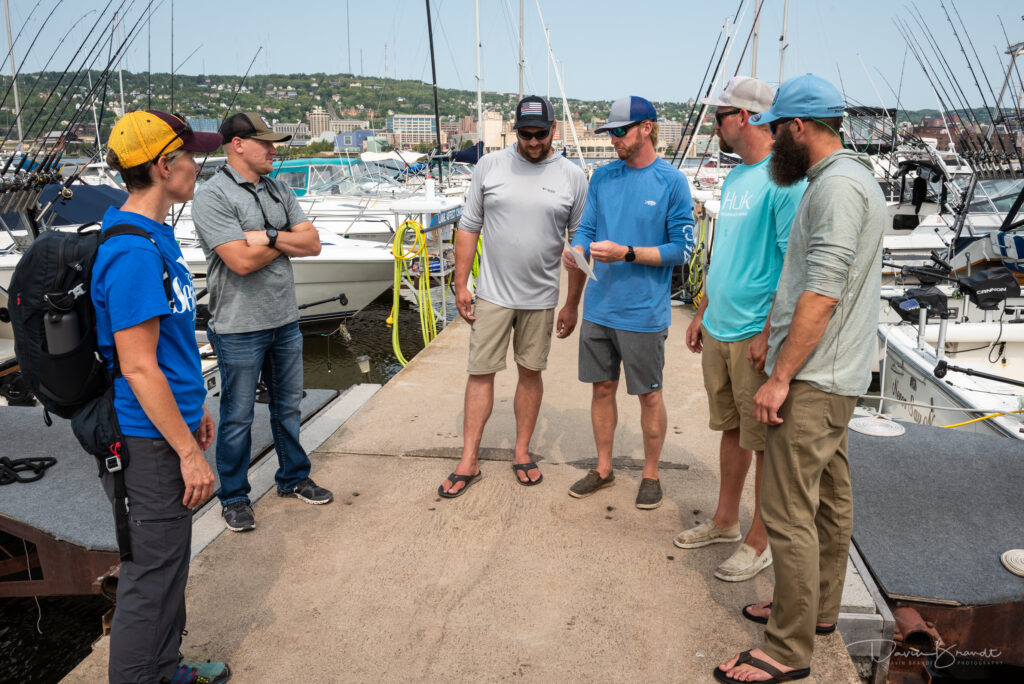
State and Tribal natural resource agencies provided in-kind contribution of staff hours, expenses, and equipment for the collection of fish stomachs from multiple length classes captured in their scheduled fish surveys, and stomach samples were frozen for subsequent laboratory analyses. Predator fish diets were analyzed at laboratories at Northern Michigan University (NMU) and Marquette Fisheries Research Station (MIDNR); prey fish diets were analyzed at the laboratory at Lake Superior State University. Unidentifiable larval and juvenile coregonines were taxonomically identified using Single Nucleotide Polymorphism genetic techniques.
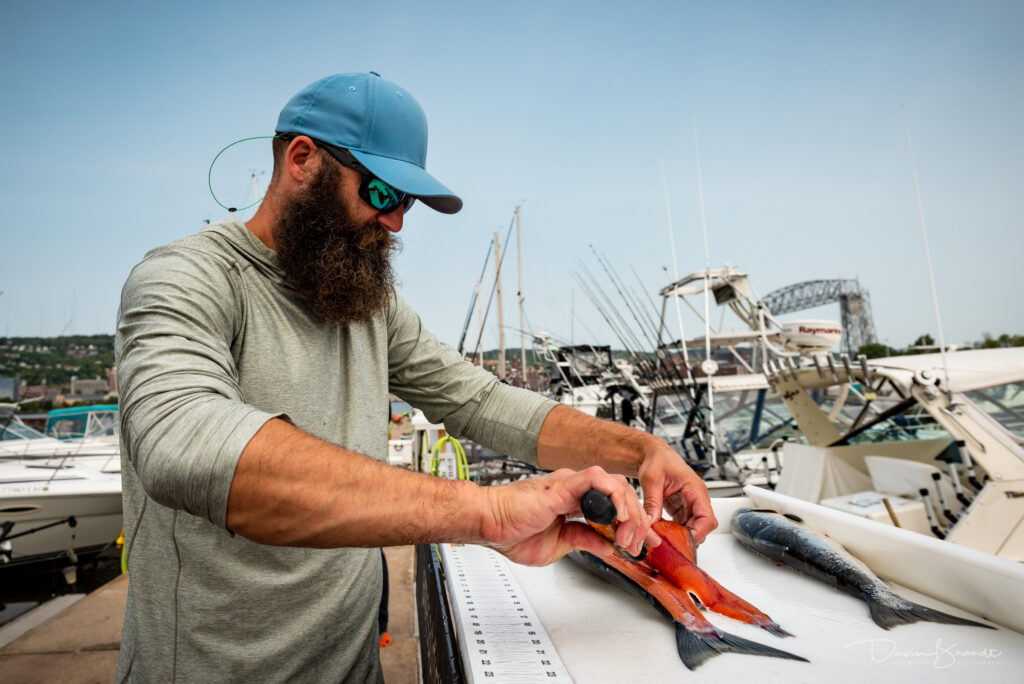
The Minnesota DNR also collected diets from some predator fish via a cooperative angling program (the P3). We (Minnesota DNR) recognized quickly that some species would be underrepresented in the lake wide analyses because some species are rarely captured in our standardized lake survey assessments in Minnesota waters (e.g., Chinook, Coho, and Pink salmon). Who catches more salmonids than Minnesota DNR? ANGLERS! And so- the P3 was born! This study is still ongoing and much of the data and sample summaries are being worked on as we speak. The lake-wide results (Sitar et al.) should be summarized and available by December 2023.
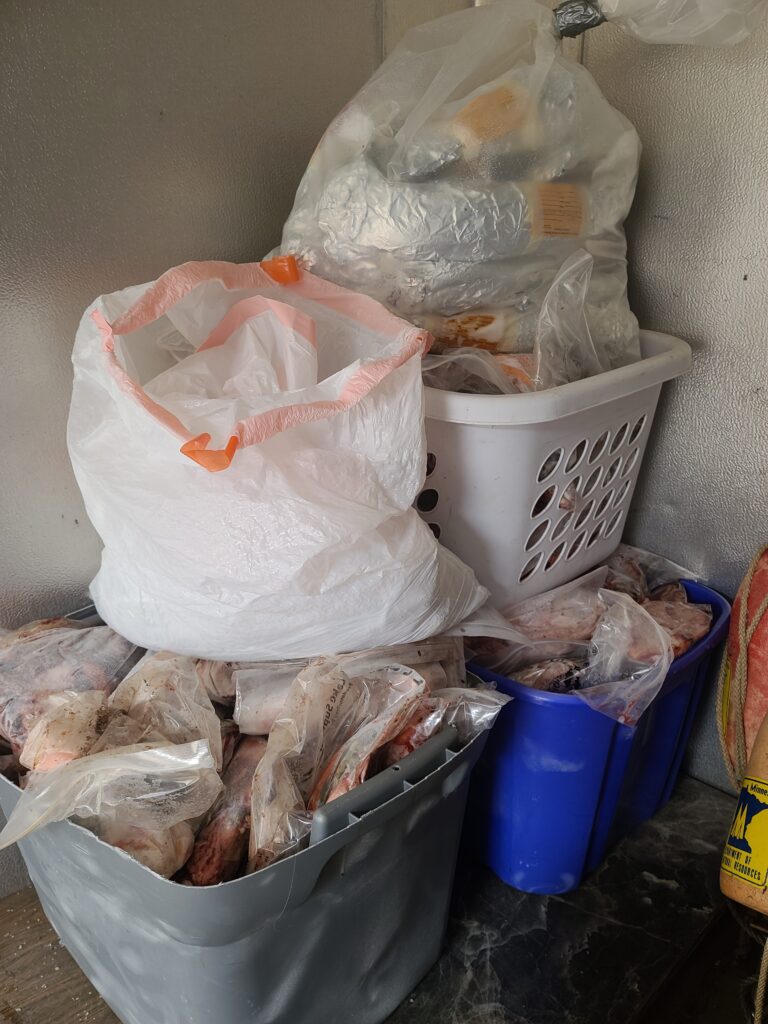
P3 sample collection summary and interesting diet items: 2020-2023
A total of 4,515 fish carcasses were donated by volunteer P3 anglers over the last three years. From that, 4,408 stomachs from 15 different fish species were in good shape (i.e., not cut open or had diets removed), pre-processed (inventoried and bagged), and sent to NMU for diet analyses. The most samples were provided from the open-water season in 2021 (3,615), with less in 2022 (705) because we prioritized a “target sample list” based on the number, shore zone, and size-group of each species we needed to reach target sample sizes. Awesome work folks! The number of fish stomachs (diets) extracted from fish donated by anglers for the Minnesota DNR’s Predator Prey Project far exceeded expectation!
At least 68 individual anglers volunteered for the P3 project over the past three years, of which 66% (45) contributed at least one sample for this study. Participants were a mix of local charter captains and individual anglers. The most samples were provided by volunteer Angler ID 22, who had contributed 858 stomach samples over three years! The second most was volunteer Angler ID 61 with 480 total samples; this was not just one individual angler, but a bunch of anglers who harvested fish during the Silver Bay Salmon Classic in 2021 and 2022; the Minnesota DNR attended these events and collected samples at the cleaning station at Silver Bay Marina. A summary of carcasses provided by Angler ID is shown in Table 3.
“Volunteer anglers are the key to making this study possible.”

Lake Superior Cisco: History is happening NOW!
Anyone who knows Lake Superior can understand how important prey are to predators in what seems to be a relatively infertile environment – and also how FEW prey there are in relation to the size of the waterbody! One of the most important prey for predator fish in Lake Superior is Cisco (also known as Tullibee or Lake Herring). I like to think of Cisco as Snickers bars – delicious snacks full of things that will make you fat and happy! Lake wide efforts to monitor the Lake Superior Cisco populations lake wide over time (via trawling on the RV Kiyi) has found that recruitment (number of small fish to replace the big ones) is an issue. Why? That story is complicated and one for another day.
Trawling data from the RV Kiyi in 2022 found that Cisco, particularly small-sized fish, are more abundant than we have seen in many DECADES! All previous diet studies have occurred in years when Cisco were much less abundant (or close to non-existent!). Therefore, we feel it is vitally important to continue with the Predator Prey Project in 2023 and help us understand what happens to this big year-class of Cisco over time. Will they survive? If not, what ate them- and when and where?
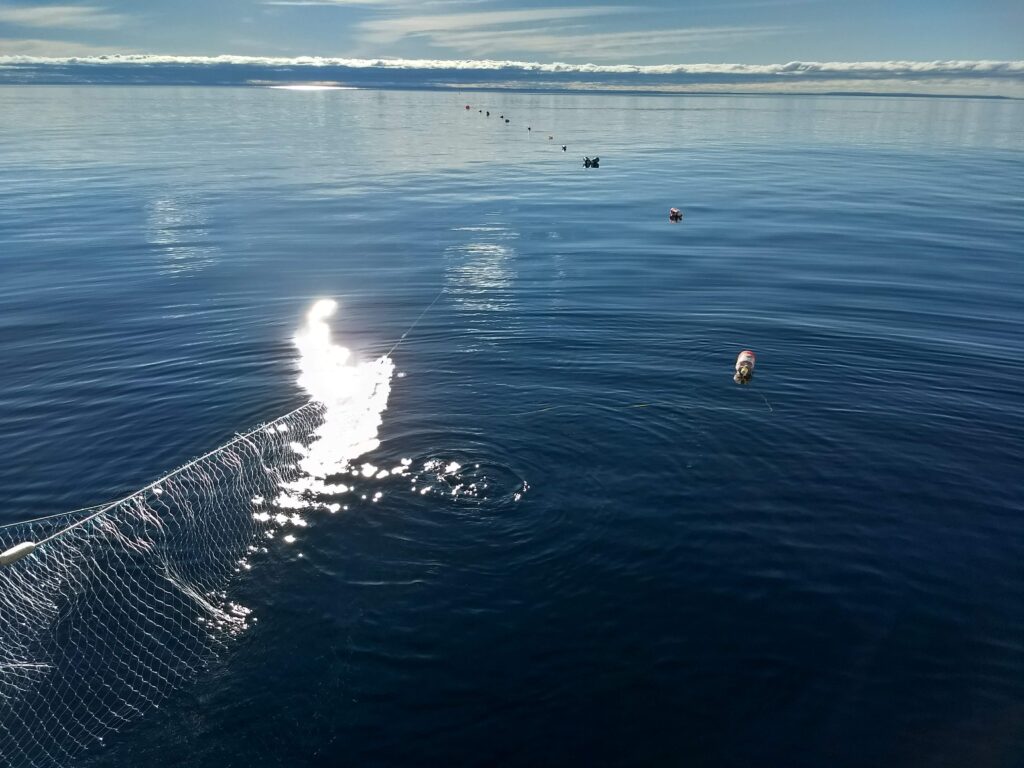

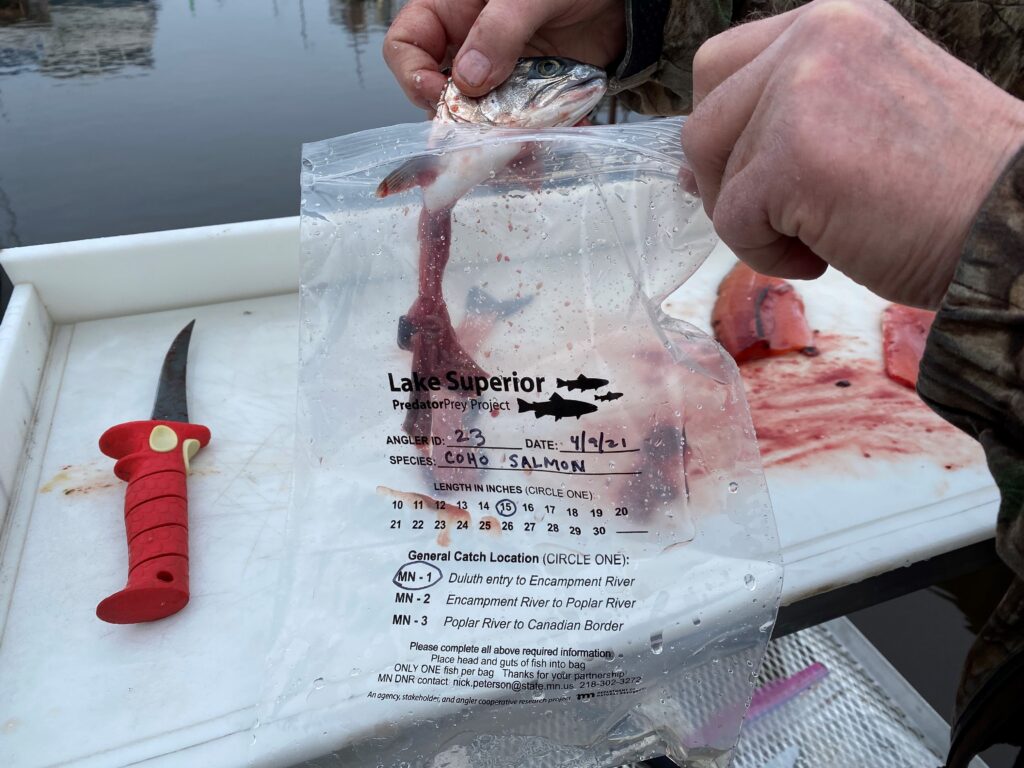
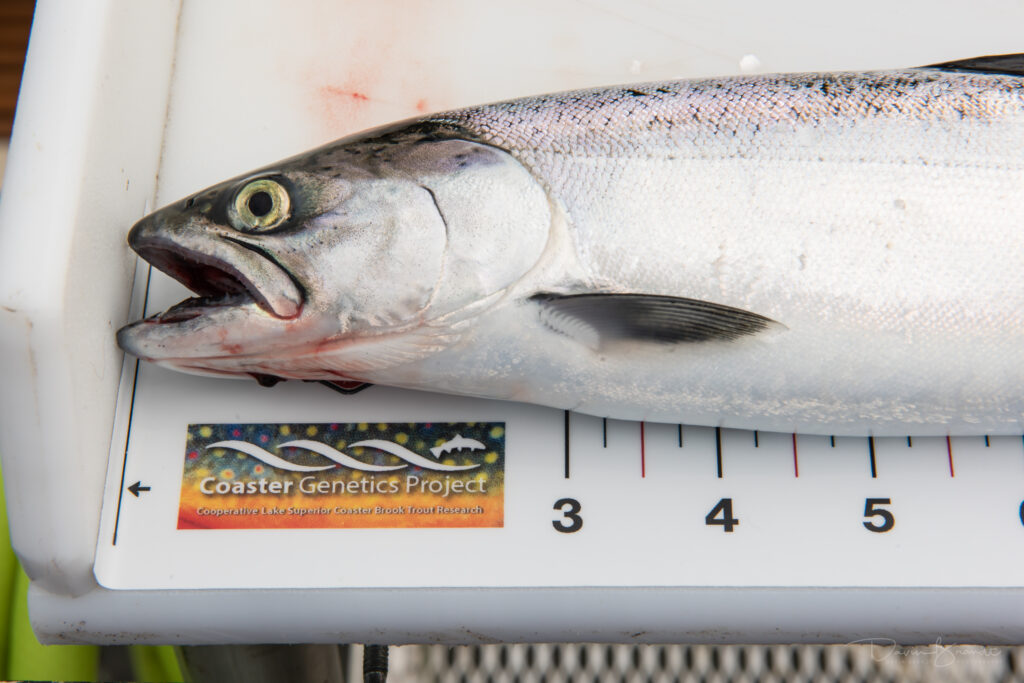
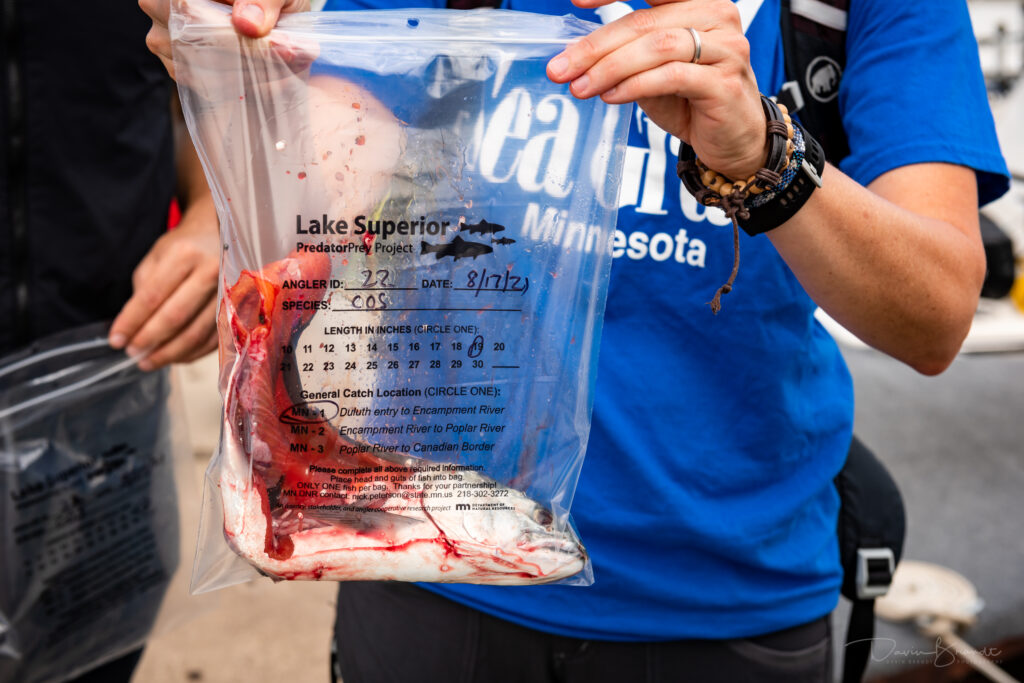
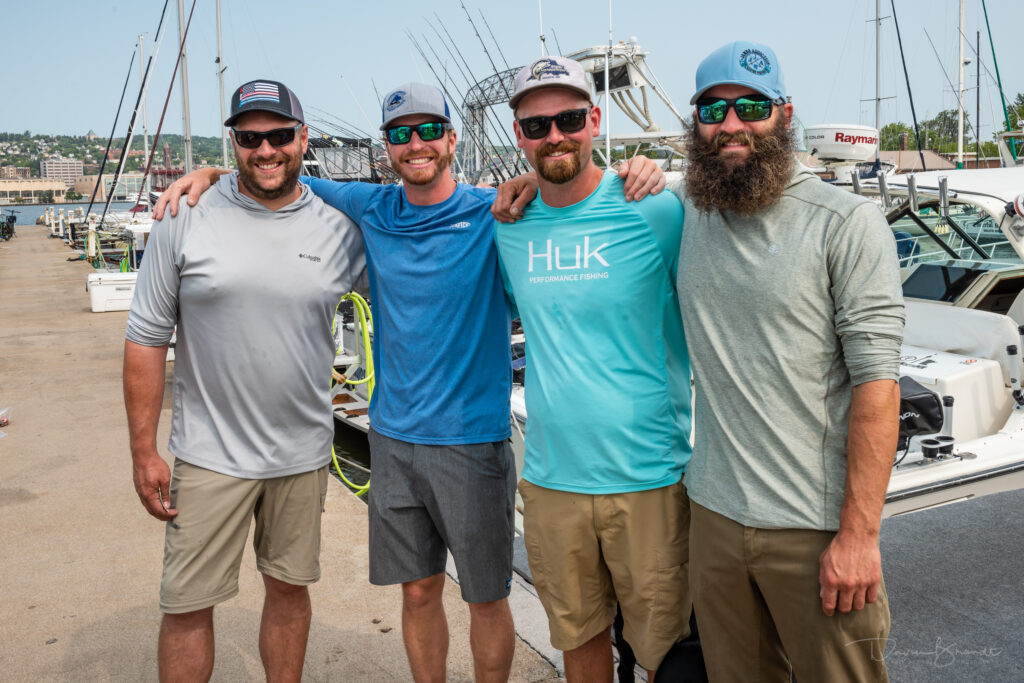
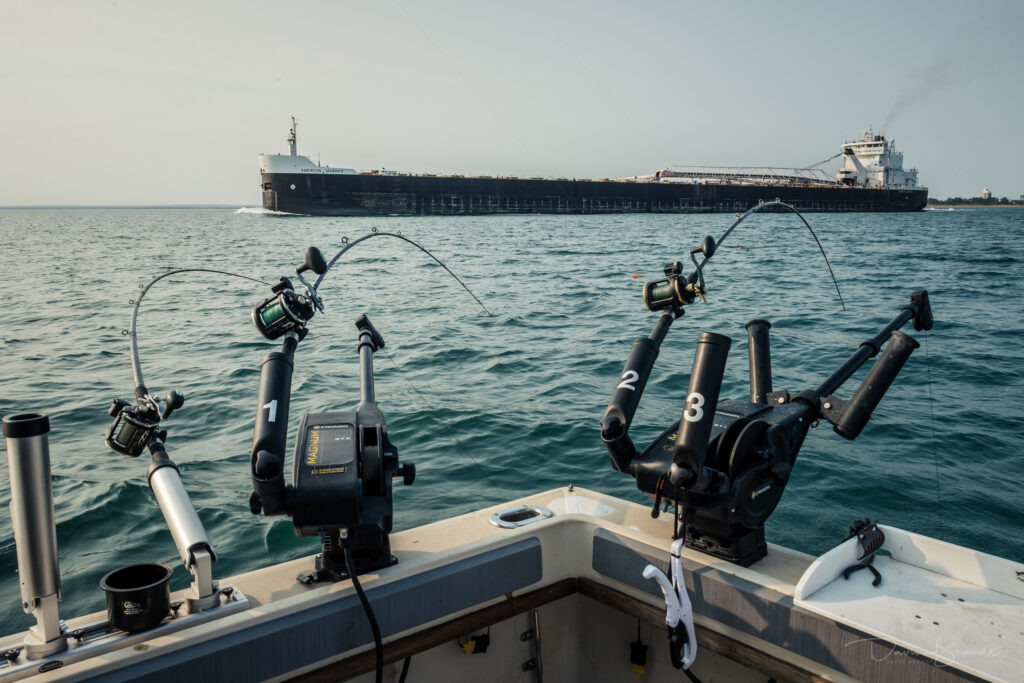


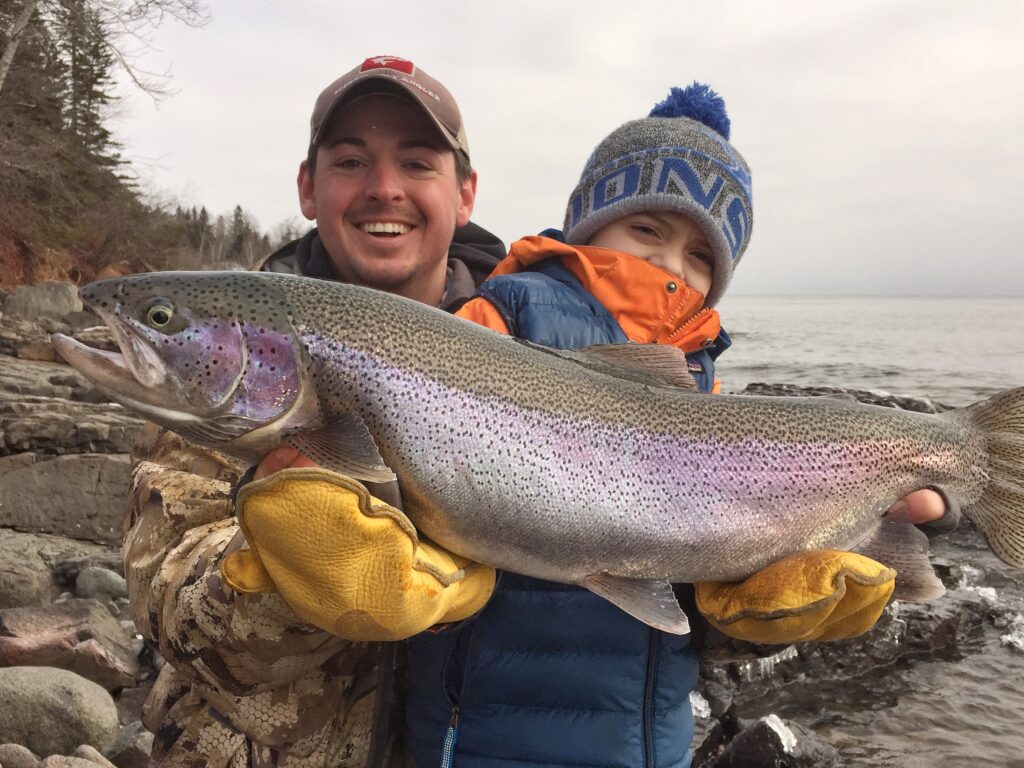
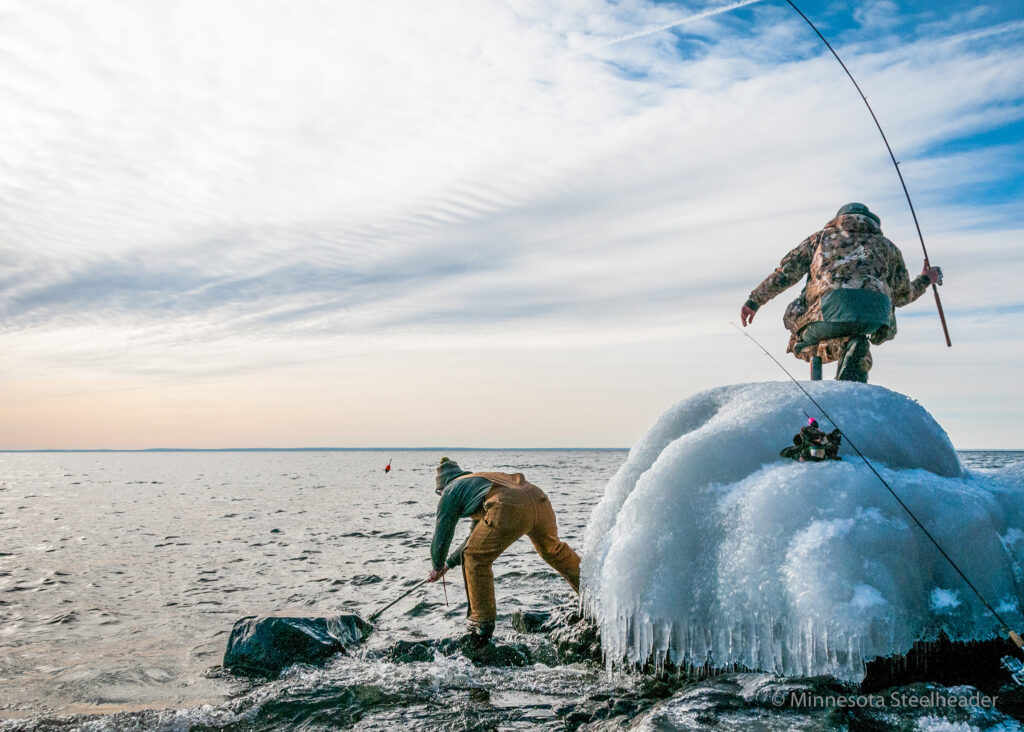
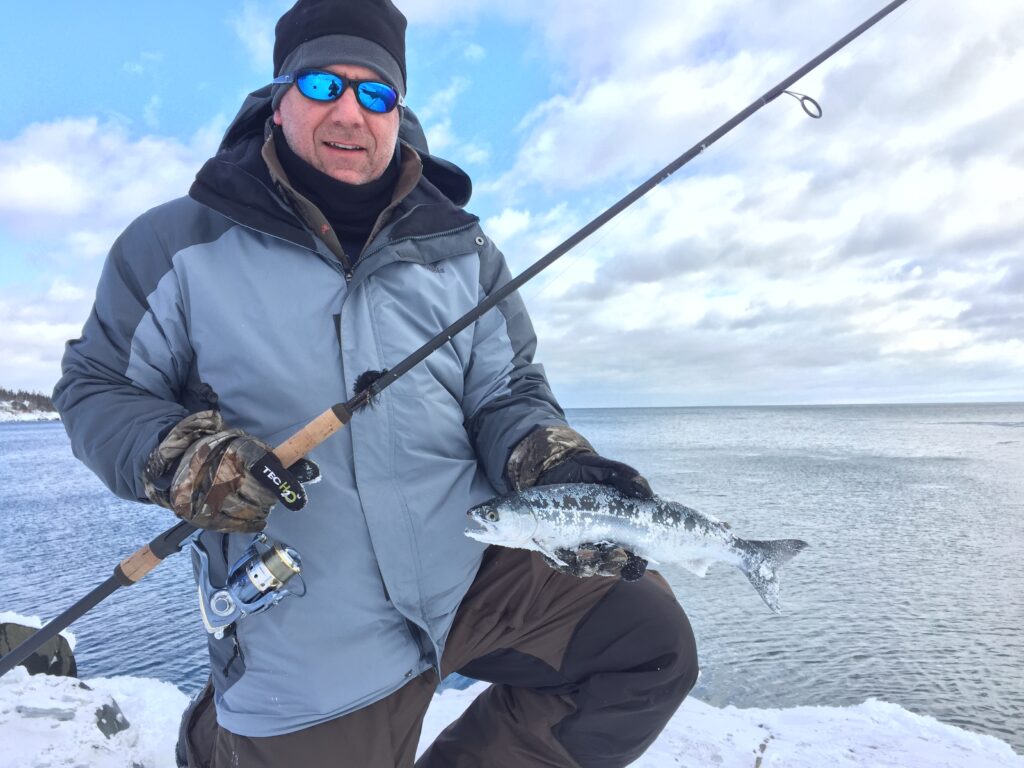
Studies, Plans, & Articles
Click the PDF links below to view/save documents
- 2023: Peterson P3 Summary (2020 – 2022)
- 2023: Trophic niche overlap of Lake Superior nearshore fishes in MN waters
- 2021: P3 Diet Study Outline & Sampling Instructions
- 2021: STATUS OF FOOD WEB DYNAMICS OF LAKE SUPERIOR FISHES IN 2021
- 2021: Field collection protocol for fish stomach samples during the 2021 Coordinated Science and Monitoring Initiative in support of the Lake Superior Food Web Analysis Study
- 2019: Huron-Michigan Predator Diet Study – 2019 Instructions
- 2018: Diet and trophic niche space and overlap of Lake Ontario salmonid
- 2017: 2017 Lake Huron Predator Diet Study
- Predator Prey Project Collection Bag
- Lake Superior Managment Zone Grids
- Salmon and Trout of the Great Lakes: An Angler’s Key for Identifying the Catch
- Salmon and Trout of the Great Lakes – A visual Identification Guide
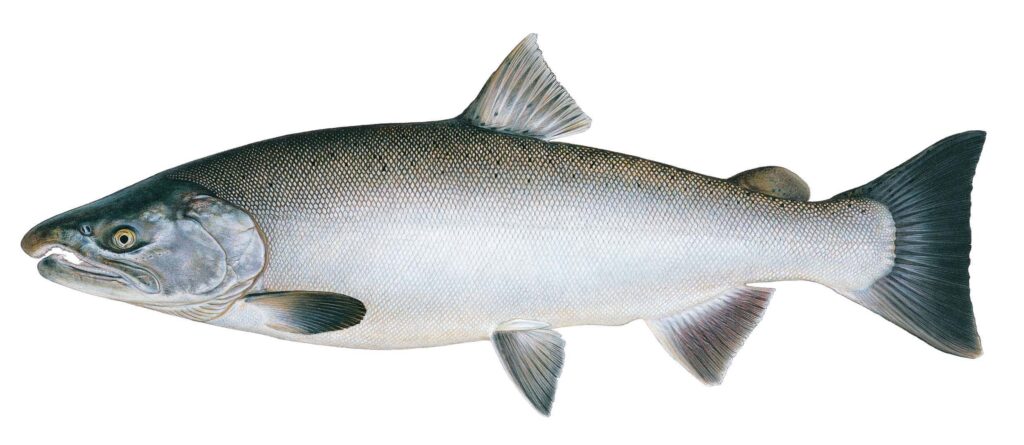
The Coho Salmon illustrated and used in this study are so incredibly scientifically accurate, right down to the scale size, placement, and amount. This illustration and hundreds more have been beautify created by Joseph Tomelleri. Learn more about Joe, his passion, and how to purchase your favorite image. Artist LINK
